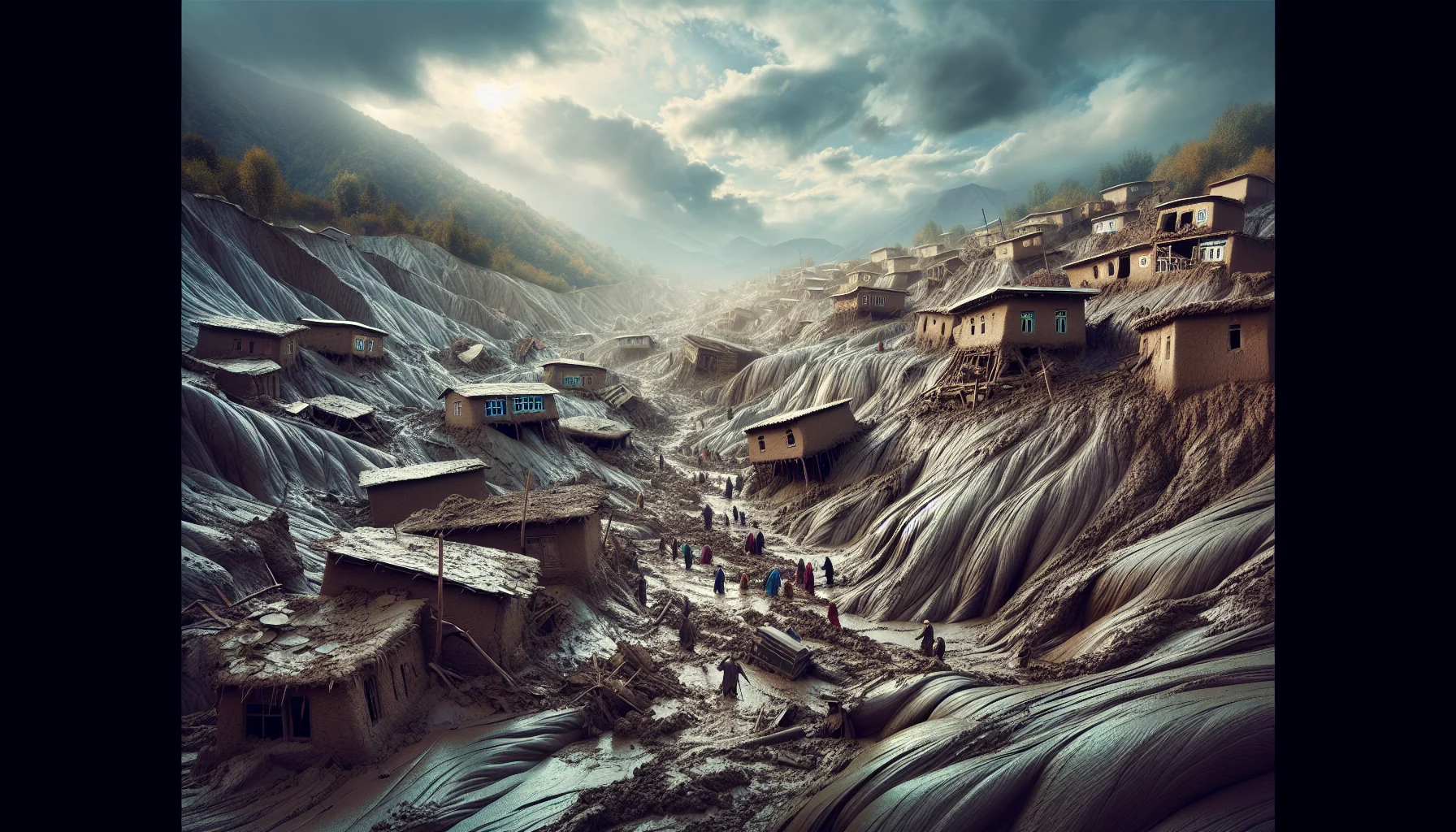
2014 Badakhshan Mudslides
by: The Calamity Calendar Team
May 2, 2014
When the Earth Gave Way
On a fateful day in May 2014, the earth around the village of Hobo Barik, nestled in the Argo District of northeastern Afghanistan's Badakhshan Province, loosened its grip. For days, heavy rains had battered the rugged landscape, turning firm ground into a lethal slurry. What happened next laid bare not just the fragility of this remote community, but also the enormous human resilience in the face of nature’s fury.
An Unyielding Rain
Badakhshan Province, known for its breathtakingly steep mountain ranges and scattered mud-brick villages, is no stranger to the threat posed by its own geography. The region’s soil, when saturated, transforms its hillsides into ticking time bombs. April 2014 was wetter than usual; persistent downpours soaked the earth, setting the stage for disaster. Even as meteorologists worriedly glanced at the forecasts, the people of Hobo Barik, like those across the region, went about their lives, their homes obliviously clinging to precarious slopes.
These homes—made of mud bricks shaped by traditions and necessity—had withstood generations of weathering. Yet, against the relentless rains of late April, their resilience was silently eroding. Concerns mounted, but with uncertainty as the norm, the villagers hoped for respite.
May 2, 2014
May 2nd arrived, draped in heavy gray clouds, oblivious of the disaster it would soon herald. Early that morning, the first of the mudslides struck without warning, engulfing Hobo Barik with horrifying speed. What started as cracks on hillsides transformed into cascading torrents of mud.
The initial slide was catastrophic. Homes, along with dreams and lives, were flattened in moments. As distraught villagers gathered to search for those trapped beneath the debris, they were caught unawares by another series of slides. Chaos reigned—splattered with cries for help and the desperate scrambles of those seeking loved ones amid the choking sludge.
By nightfall, a grim picture emerged: hundreds were trapped beneath tons of mud and debris, and the village was buried beyond recognition. Emergency communications crackled with fragmented reports—a tragedy of this scale, in such a secluded area, hadn't been anticipated.
Thanks for subscribing!
Counting the Cost of the Mud
Stunned by the event's scale, initial estimates counted at least 350 lives lost, though some reports speculated fatalities could surpass 2,000, a sobering testament to the many who remained unaccounted for. An estimated 1,000 homes vanished in the mud’s path, displacing countless families and reducing the hints of family histories to mud-clad ruins.
The village’s economy, pivoting heavily on agriculture and communal sustenance, lay in tatters. Fields once green with promise now lined with nothing but silence—a loss immeasurable, not only in crops but possibilities.
A Struggle Against Geography
This disaster called for urgent action, both from within Afghanistan and beyond its borders. The Afghan government, alongside a cohort of international aid agencies, scrambled to mount a response. Helipads sprang up where roofs once were, as aid helicopters ferried essential supplies—food, water, and tents—for the displaced families.
But the recovery was neither quick nor easy. Geography, the very trait that marked Badakhshan, also restricted its rescue. The difficult terrain and lack of proper infrastructure demanded innovative solutions and unwavering resolve from those involved. Meanwhile, rain-soaked paths turned to mud, hampering the delivery of aid.
Calls intensified for improved disaster response plans. This disaster starkly underscored Afghanistan's need for better land management and foresight when living in harmony with the unpredictability of nature.
Lessons from the Mud
Today, the painful memory of May 2014 translates into a forward-looking drive. This tragedy steered critical conversations on disaster preparedness in Afghanistan, emphasizing the urgent necessity of early warning systems and risk reduction education. While international attention has shifted to newer narratives, the lessons learned from the Badakhshan mudslides quietly inform policy and practice in disaster-prone regions across the globe.
In Hobo Barik and its surrounds, the spiraled contours of mud have given way to resilience—a testament to human spirit and determination to rebuild. The villagers, those who remain and those who've returned, carve their stories anew, aware of the land's paradox of beauty and peril.
The mudslides in Badakhshan were more than a tragedy; they were a testament to the fragility and fortitude of life on the edge. Even in outpours, stories of survival and recovery, like seeds hidden in the soil, promise regeneration.
Stay in the Loop!
Become a Calamity Insider and get exclusive Calamity Calendar updates delivered straight to your inbox.
Thanks! You're now subscribed.